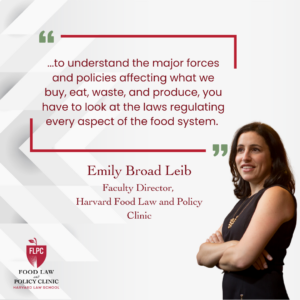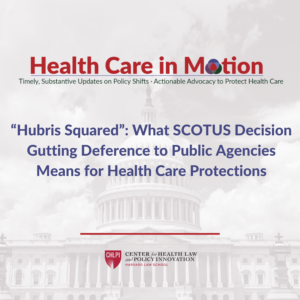[vc_row][vc_column][vc_column_text]Originally published by New Food Economy on October 14, 2019. Written by Jessica Fu.
Earlier this year, Mount Sinai, the biggest hospital network in New York City, invested in a meal delivery service. Though it seemed like an unusual move at the time, the network’s decision makes sense if you consider the intrinsic relationship between food and health—a connection underscored by countless other recent examples of healthcare initiatives that harness diet as a tool to improve well-being.
At a California rehabilitation facility, for instance, doctors use the rituals of eating to help people recover from trauma. And over the past decade, cities across the country have launched “food prescription” programs that incentivize participants in the Supplemental Nutrition Assistance Program (SNAP) to buy fresh fruits and vegetables at farmers’ markets. A number of nonprofit organizations have launched medically-tailored meal services for people suffering from diet-related diseases.
Culturally and politically, we’re increasingly acknowledging that what we eat plays a major role in our health. Which is why it’s especially strange that healthcare providers know so little about it. Medical curriculums have been developed historically, foregrounding disciplines like biology, behavior, and disease to the detriment of food and nutrition.
In a new report published by the Harvard Food Law and Policy Clinic, researchers write that, on average, students in medical schools across the country spend less than 1 percent of lecture time learning about diet, falling short of the National Research Council’s recommendation for baseline nutrition curriculum. Neither the federal government, which provides a significant chunk of funding to medical schools, nor accreditation groups—which validate them—enforce any minimum level of diet instruction.
And it shows: While you and I might show up for our annual physicals expecting feedback on our what and how much we should be eating, just 14 percent of doctors feel qualified to offer that nutrition advice.
How did the gap get this wide? Much of it can be explained by the way medical curriculums have been developed historically, foregrounding disciplines like biology, behavior, and disease to the detriment of food and nutrition. Today, the legacy of this framework makes it hard for medical schools to retroactively integrate nutrition into their curriculums.
“Because [nutrition] wasn’t prioritized for so long, there aren’t a lot of faculty and medical schools that have any knowledge about nutrition and diet,” says Emily Broad Leib, the report’s lead author. “To build it into schools now requires real investment in hiring and training.”
The report recommends a wide range of policy changes that could function as carrots and sticks in getting nutrition onto course outlines. They range from making federal funding contingent on nutrition training to performance-based incentives that encourage schools to include diet-related subjects in curriculums.
“Why are we spending so much government money to educate physicians and residents, and yet we’re not getting any impact in terms of these this large set of [diet-related] diseases?” Broad Leib asks.
The recommendations also implicate other players in the world of medicine, like accreditation organizations and licensing boards, for not requiring a baseline level of dietary expertise from schools and doctors, respectively. Part of the reason that may be is the prevailing attitude society has toward food as a soft science.
“People believe that nutrition is easy, when in reality, nutrition is most of medicine—and then a lot more,” says Martin Kohlmeier, a professor of nutrition at the University of North Carolina-Chapel Hill. “You have cultural, food production, and food safety issues. It is a challenge for physicians to learn enough.”
Kohlmeier leads the Nutrition in Medicine Project, a free, online nutrition curriculum tailored to medical students and doctors. Kohlmeier estimates that 150,000 students have participated in some aspect of the program since its launch in 1995. Nevertheless, he stresses, voluntary education is only a temporary fix for a systemic problem.
“A lot of institutions have electives, all kinds of nice things that maybe 1 to 5 percent of their students use. And I’m always saying: ‘You are going to be treated by the physician who skipped those classes.’”
But why teach doctors nutrition and diet when there already exists a specialty in those fields? Nutritionists and dieticians are experts in the way our individual biologies are affected by what we eat. What role will they play if our general practitioners develop that same expertise?
Shoring up what doctors know about food won’t render nutritionists moot, says Carol DeNysschen, a registered dietician and chair of the health, nutrition, and dietetics program at the State University of New York-Buffalo.
“The more that [doctors] know, the more they realize what they don’t know, and the more they realize how complicated it can be to develop an individualized nutrition plan for people and to get them the support they need to monitor or manage [issues like] their weight, their diabetes,” DeNysschen says.
DeNysschen characterizes the relationship between doctors and nutritionists as a symbiotic one. Doctors with expertise in nutrition are more likely to spot diet-related issues earlier in a patient’s prognosis, and that could mean more referrals to diet experts. “The more nutrition knowledge they have, the more they’re aware of looking for those areas where a nutritionist or dietitian could interject,” she says.
Beyond the healthcare implications, the Harvard report also makes an economic case for teaching doctors about food. Taxpayer dollars fund most physician residencies in the United States through Medicare. (Medical school graduates train to become doctors via residency in a hospital.) Simultaneously, Medicare serves as the national insurance program for aging Americans, and thus, incurs the costs of diet-related diseases during that stage of our lives. Therefore, the report argues, requiring nutrition education in medical residencies is another way for Congress to trim its own bills.
That’s one element of the case that Broad Leib will likely make next week at a Congressional hearing. Though the report largely focuses on federal policy changes, some local lawmakers are introducing legislation that would require nutrition education among doctors within their jurisdictions. In New York, for example, state legislators recently proposed a bill that would require practicing physicians to receive six hours of nutrition coursework or training every two years. In Washington, D.C., municipal lawmakers introduced a bill that would require continuing education for doctors to be expanded to include nutrition coursework.
Poor diet continues to be one of the biggest contributors to chronic disease and mortality in the U.S., killing one in five Americans. That’s a higher rate than three other risk factors—pollution, lack of exercise, alcohol and drug use—combined. As the tide continues to rise in favor of ideas and policies that combine food and healthcare, medical schools may be next to center nutrition in their work. Someone’s just got to prescribe it.[/vc_column_text][/vc_column][/vc_row]


Health Law & Policy, Commentary
Braidwood Management v. Becerra: Updated FAQs for Health Advocates and Providers
July 22, 2024